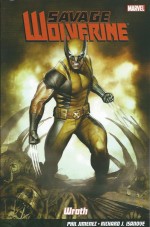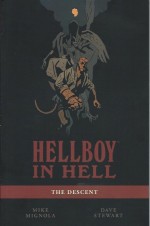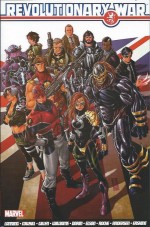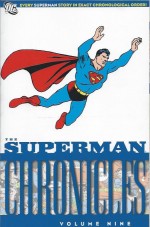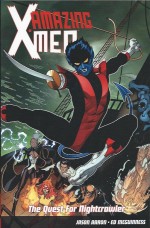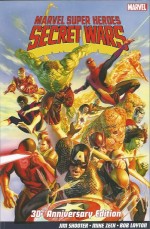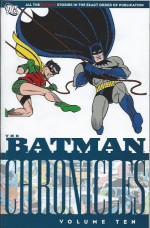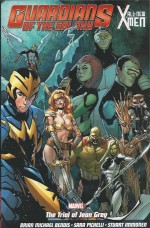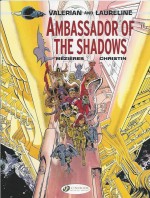
By Méziéres & Christin, with colours by E. Tranlé and translated by Jerome Saincantin (Cinebook)
ISBN: 978-1-84918-178-5Â Â (Dargaud edition) 2-205-06949-7
Valérian and Laureline is the most influential science fiction comics series ever drawn, an innovation-packed big ideas drama stuffed with wry comment and sardonic sideswipes at contemporary mores and prejudices.
Although to a large extent those venerable strips defined and later re-defined the medium itself, anybody who has seen a Star Wars movie or that franchise’s numerous homages, pastiches and rip-offs has been exposed to many doses of Jean-Claude Méziéres & Pierre Christin’s brilliant imaginings uniquely innovative, grungy, lived-in authentic futurism and light-hearted swashbuckling rollercoaster romps of Méziéres & Christin than any other cartoon spacer.
Val̩rian: Spatio-Temporal Agent debuted in Pilote #420 (November 9th 1967) and was an instant hit. It gradually evolved into Val̩rian and Laureline as the feisty sidekick developed into the equal partner Рif not scene stealing star Рin a light-hearted, fantastically imaginative time-travelling, space-warping fantasy stuffed with wry, satirical, humanist action and political commentary.
At first Valerian was an affable, capable but unimaginative by-the-book space cop tasked with protecting the official universal chronology by counteracting paradoxes caused by incautious time-travellers.
When Valérian travelled to 11th century France in debut tale ‘Les Mauvais Rêves (‘Bad Dreams’ and still not translated into English yet), he was rescued from doom by a fiery, capable young woman named Laureline. He brought her back to the 28th century super-citadel and administrative capital of the Terran Empire, Galaxity. The indomitable female firebrand trained as a Spatiotemporal operative and began accompanying him on all his missions.
Ambassador of the Shadows originally ran in Pilote from July to October 1975 and finds the wide-ranging Spatiotemporal agents assigned to an arrogant and obnoxious Terran diplomat transferring to the cosmically cosmopolitan space edifice known as Point Central.
Over the eons many races and species have converged there for commerce and social intercourse by the simple expedient of bolting their own prefabricated constructed segment to the colossal, continually expanding hodge-podge whole…
With no central authority, different species take turns presiding over the amassed multitudes via the immense Hall of Screens. However, no decent species would ever leave its own tailor-made environment…
And now it is Earth’s turn to take the lead but, as they vector in for landing, the pompous martinet they are escorting informs Valerian and Laureline of a slight modification in their orders. They are still to the Ambassador’s bodyguards but must stay extra vigilant as Earth is going to uses its term in office to bring “order and discipline†to the lackadaisical way the universe is run.
The assembled races will be invited to join a federation run – and policed – by Earth. …And just to make sure, there’s a Terran space fleet of 10, 000 warships manoeuvring just out of Point Central’s sensor range…
Laureline is outraged but like Valerian can do nothing except acquiesce. For her pains she is put in charge of the mission’s funds – a Grumpy Transmuter from Bluxte – which can mass-excrete any currency or object of trade or barter swallowed by its always scowling other end…
All kitted-out, the trio and the living cash-machine spacewalk to Point Central but before the mission can begin an alien ambush occurs. Mystery warriors using Xoxos cocoon guns inundate the attending officers and dignitaries and only Valerian escapes plastic entombment.
As the raiders make off with the Ambassador, the Spatiotemporal Agent gives chase but is easily captured and dragged off too…
By the time Laureline breaks loose they are long gone and she is left to pick up the pieces with stiff-necked human bureaucrat Colonel Diol, Under Chief of Protocol.
Determined but with little to go on, she is cautiously optimistic when a trio of aliens come knocking. Ignoring Diol’s protest at the shocking impropriety she invites the scurrilous Shingouz into the Earth Segment. They are mercenary information brokers and claim to have been invited by the Ambassador before his abduction…
From them – and thanks to the pained efforts of the Grumpy Transmuter – she purchases a few hints and allegations as well as a map of Point Central which might lead to Earth’s secret allies in the cosmopolis…
With the constantly bleating Diol reluctantly in tow, Laureline begins a quest through the underbelly of the station, seeing for the first time the mute but ubiquitous Zools: a much ignored under-race which has been maintaining Point Central for millennia.
The Earthlings’ perambulations take them to the centaur-like Kamuniks: barbaric feudal mercenaries allied to Galaxity and appreciative of humanity’s martial prowess, and over a lavish feast – liberally augmented by another painfully exotic payment courtesy of the overworked Transmuter – the warriors steer Laureline towards potential suspects the Bagulins: low grade muscle-for-hire who frequent the tawdry red-light sector run by The Suffuss…
Despite Diol’s nigh-apoplexy the adamant and inquisitive Laureline follows the trail to the sin segment where she experiences the particular talents of the hosts: amorphous shapeshifters who can make any carnal dream come literally true.
Well into overtime now, the exhausted Grumpy buys the help of one Suffuss who smuggles the junior Spatiotemporal operative into a Bagulin party and the next link in the chain…
And so it goes as, with occasional prodding from the Shingouz, Laureline gets ever-closer to the enigmatic beings truly pulling all the strings on Point Central whilst elsewhere Valerian frees the Ambassador from a bizarre and ethereal captivity only to find the doctrinaire war-maker is undergoing a strange change of heart.
Seemingly landing their deserted ship on a paradisiacal “world with no name†they bask in an idyllic paradise and converse with noble primitives who have an uncanny aura of great power.
These beings built the first section of Point Central and ruled the universe before withdrawing from mundane material affairs, but they still maintain a watch over their creation from the shadows and won’t let any race or species to dominate or conquer their pan-galactic melting pot of space…
In a more physical portion of reality Laureline follows her final clues and reaches the strange central area where Val and the Ambassador lie dazed and confused. By the time they all return to the Earth Segment a few major changes have taken place in the governance of the immense star station but, oddly, the Ambassador doesn’t seem to mind…
Ambassador of the Shadows was the first Valerian tale to make it into English, appearing as a serial in the American Heavy Metal magazine from January to April 1984 (volume 4, #10 to Volume 5, #1).
Socially aware and ethically crusading, this is one of the smartest, most beguilingly cynical comics tales to catch the 1970s wave of political awareness and still ranks amongst the very best to explore the social aspects and iniquities of colonialism.
And of course there’s the usual glorious blend of astounding action, imaginative imagery and fantastic creatures to leaven the morality play with space-operatic fun-filled, visually breathtaking and stunningly ingenious wide-eyed wonderment…
Between 1981 and 1985, Dargaud-Canada and Dargaud-USA published a quartet of these albums in English (with a limited UK imprint from Hodder-Dargaud) under the umbrella title Valerian: Spatiotemporal Agent and this tale was the fourth release, translated then by L. Mitchell.
Although this modern Cinebook release boasts far better print and colour values plus a more fluid translation, total completists might also be interested in tracking down the 20th century edition too as it boasts a foreword by comics god Will Eisner, full creator biographies and a fascinating, insightful illustrated overview by French science fiction author and editor Daniel Riche…
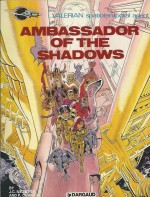
© Dargaud Paris, 1975 Christin, Méziéres & Tran-Lệ. All rights reserved. English translation © 2012 Cinebook Ltd.

